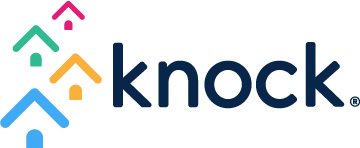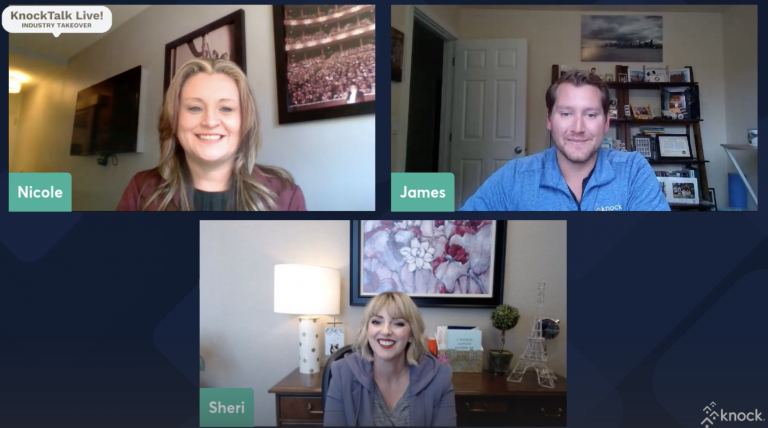Multifamily, We Have an Efficiency Problem (Part 3/3)

As we addressed in parts one and two of this three-part series…multifamily, we have an efficiency problem. And despite this being the THIRD part of the series, we’re going to again remind you to remember just one number: 2.
We have 2x the number of leads coming in compared to two years ago, during pre-pandemic days. Why? Because prospects don’t want to just show up for tours anymore. Before they head to your property, they’re doing more online research and qualification than ever before, which is why we saw a 96 percent increase in photo and virtual tours on our chatbot last year. So if you haven’t added 2x the staff to handle the changes in job requirements since the pandemic hit, then you’re likely leaving money on the table or burning it — or even worse, you may have teams currently looking for new roles at other companies (which our recent survey showed was up to 50 percent of leasing agents).
The bad news? This is real data and a real problem. The good news? The pressure put on by Covid is pushing our industry (let’s face it, we know we’re “a bit slow” sometimes; new things = very scary) to geek out on tech. And it’s about damn time.
A good tech stack is the key to efficiency
Guess what: You’re reading a blog written by a marketer. About marketing and leasing technology. And guess what else? These leasing challenges aren’t unique to multifamily. We’ve felt what you feel. The ONE solution that actually works (aside from setting great goals): a top-notch, flexible tech stack with fantastic reporting at its core (no, this is not a pitch, it’s real life).
Here are the four steps for creating the best tech stack possible.
Step 1: Build your stack around your conversion point
You know what happens when your leasing teams disappear? Your leases do, too. As does your Christmas bonus, which turns into a jelly-of-the-month club subscription.
A happy and well-oiled leasing team is the key to rental revenue, so build your front office tech stack around the front office workers that are responsible for bringing in all that juicy revenue every month — and spend a period of time focused on getting your conversion rates as high as you possibly can. Pilot new tools, plug them into your CRM, and monitor your conversion rates.
Once your conversion point is fully optimized, dial up some of your marketing with a “test-and-learn” budget. This budget is specifically designed to help you figure out how well those marketing dollars work across channels, and since you’ve already optimized your leasing conversion rate, by the end you’ll have a real picture on how your marketing dollars are working and the “traffic vs people” problem will be nullified.
Will there be other variables like seasonality or pipeline constraints? Sure, there always are, but a leasing roadmap like this will provide you with learnings that you can apply for years to come while you build that resume with killer stats through your happy and efficient teams.
Step 2: Add automation to the very top of your prospect funnel
Answer me this: Do you want your leasing teams sitting behind a screen writing emails, or do you want them giving tours and working with residents? If you answered “behind a screen writing an email,” then I’m sorry, but you’re probably about to get acquired by an NMHC Top 50 company (tech joke).
Let’s keep your leasing teams leasing. One of the fastest ways to get a big bang for your buck is automation. Add self-scheduling and other response automation tools to all your marketing channels — from ILS to your website — to help pre-qualify leads while eliminating the cumbersome scheduling communications for leasing teams. Once added, most properties see up to 2.5x higher volume — creating efficiency by simultaneously saving the need for costly headcount and generating more qualified leads. The more automated touchpoints you add to the top of your funnel, the more you qualify leads, and the more your leasing teams can focus on building relationships instead of becoming email marketing managers and applying for a job here at Knock®.
Step 3: Create flexibility
Hands down, one of the worst parts of tech stack creation is when you’ve found a great new vendor that solves one of your problems, only to find out its integrations don’t actually integrate or don’t play nice with your other tools. In multifamily, this of course starts with the PMS integration. Every company needs a PMS for their back office teams to conduct their work — that ain’t changing any time soon — but your front office teams need tech that focuses on their needs, too. One of the most critical components of your front-office stack is the ability to seamlessly plug multiple tools into a single source of truth for accurate data, automated task management, and a unified calendar.
In March 2020, I’d bet your teams suddenly had a pretty substantial need for some form of self-guided tours, right? Well, did the rest of your tech stack support them? Did they integrate their data? Did they integrate into your leasing teams’ standard workflow or calendars? Or did this suddenly split your teams’ attention into more directions? And you had self-guided prospects showing up to locked doors with no agents on staff?
When tech stack flexibility is not a part of your core CRM, suddenly your leasing teams have multiple log-ins, scattered communications, a broken to-do list, broken ops, and no system of record. And what makes matters worse is your reporting has now gone to crap because of it. Adding technology should cause fewer headaches, not more, so before you buy, make sure you ask about more integrations than just the back office property management systems.
Step 4: Stop wasting time on reporting
The core of what you know about your business sits inside databases a mile long, a mile wide, and a mile deep. It shouldn’t be up to you, a dozen property managers, and an entire BI team to decipher how to reduce your cost-per-lease, and you shouldn’t have to download and merge seven reports from your back-office PMS to do so either.
If your front office tools don’t give you reporting that helps you take action, then why are you paying for it? Let’s run an example: cost-per-lease (CPL). While a few of the dinosaur systems out there still don’t have a concept of CPL in their reporting, most of the best-in-class systems do. But there’s a problem. Many systems present the number as an individual object with little to no actionable data attached to it. Example: CPL = [insert number]…AND THERE’S YOUR REPORT! DON’T YOU FEEL SMARTER?
So when your VP or president comes to you and asks you how you’re going to reduce your marketing spend or get a better CPL, what’s your response? A bottle of wine and a long night? Instead, imagine you have all of your ad spends for the last year for each of your paid and unpaid channels, and that they’re automatically tied to your leasing outcomes. Now instead of one CPL number, you have one for every channel. Now you know you can cut three out of 20 channels, reduce costs, and maintain the same occupancy. Congrats on getting efficient.
And there you have it.
Our multifamily efficiency problem is solved within three blog posts. (JK, but we hope this helps.) When leasing teams are strapped and the world is dealing with unprecedented happenings every other day, it affects everyone, and we’re here to be champions for you and your front office teams.
Find us on our social channels and tell us about some of the efficiency problems you and your teams are facing. You can also join us on Renter Obsessed Live to share your brilliant new ideas and systems and talk shop with multifamily peers!


